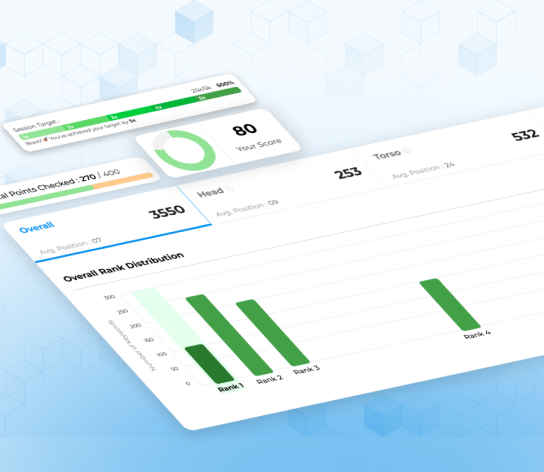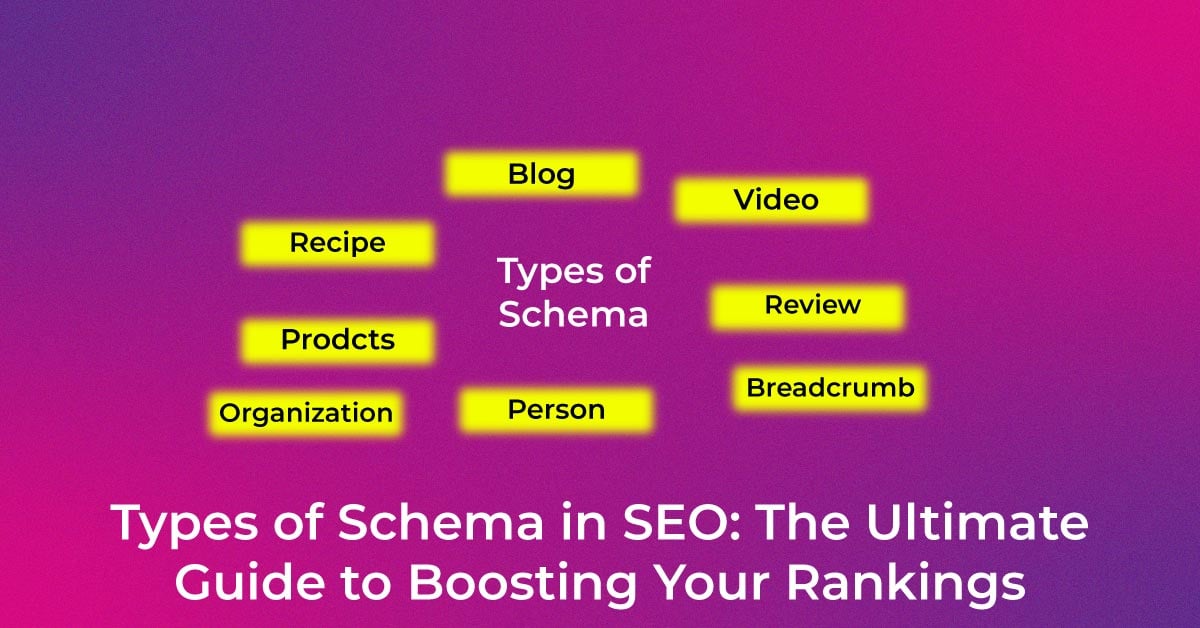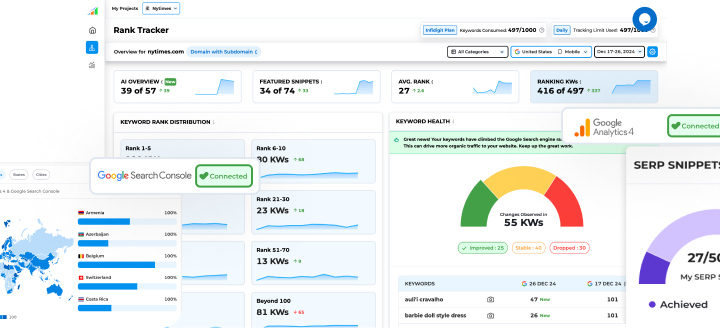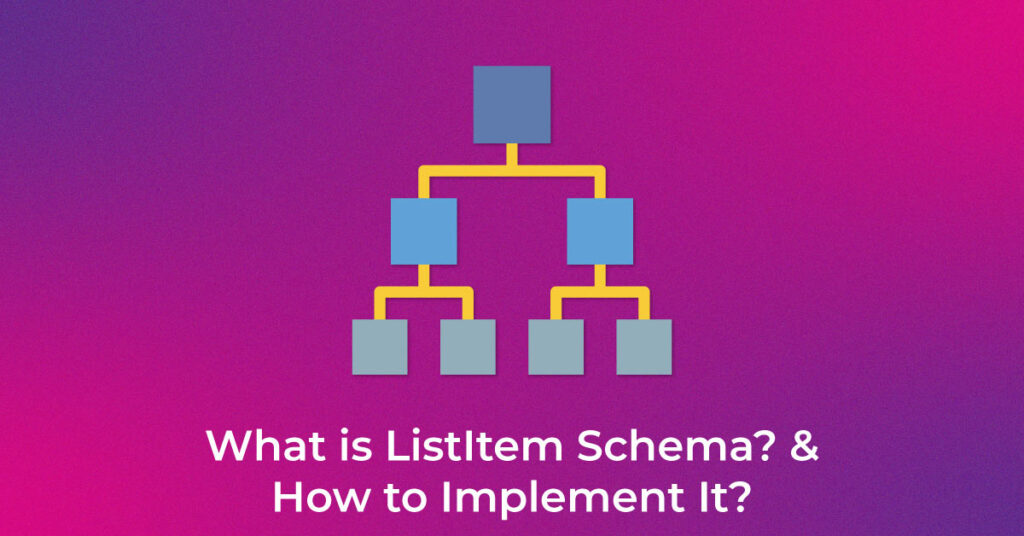To stay ahead in today’s fast-paced digital landscape, you need to bring your A-game in SEO. One way to bolster your site’s SEO is through the implementation of ListItem Schema. Think of it as giving search engines a ‘cheat sheet’ to your content, enabling them to understand your listings better and showcase them effectively in search results.
Introduction to ListItem Schema
Definition of ListItem Schema
ListItem Schema is a type of structured data that helps search engines understand the content and structure of lists on your web pages. It’s a microdata format that enriches the snippets displayed in search results when your page contains a list, such as steps in a tutorial, key points in an article, or a product feature list.
Using ListItem Schema, you format each element within the list in a way that explicitly denotes its position and relationship to other items. This clarity enables search engines to present the data within rich snippets or enhanced search features, giving users a sneak peek into the content and potentially increasing click-through rates.
Importance of ListItem Schema in Structured Data
ListItem Schema holds significant weight in the realm of structured data as it efficiently categorizes and clarifies list content for search engines. The main thrust of employing structured data is to allow these engines to parse through information with precision, ensuring that the most relevant and user-centered results are promoted.
By integrating ListItem Schema, you’re not just improving clarity for algorithms; you’re directly influencing the user experience. Lists structured with this schema can trigger rich snippets or interactive features in search results, which naturally capture user attention and can lead to higher engagement and click-through rates.
Moreover, this schema type sets the stage for voice searches and digital assistants to utilize your content effectively, catering to the trends of modern search behaviors.
In essence, the use of ListItem Schema becomes instrumental in making your content more accessible, navigable, and ultimately more consumable for both search engines and users.
Use Cases for ListItem Schema
ListItem Schema is versatile and suited for a myriad of scenarios on the web. Whether you’re running an e-commerce site, a how-to blog, an event calendar, or just about any site that uses lists, implementing ListItem Schema can be beneficial. Here are a few use cases:
- E-commerce Platforms: Help users find products faster by listing product features, prices, and ratings in a structured manner.
- Recipe Websites: Enhance search result displays by detailing recipe ingredients, cooking times, and user ratings.
- How-To Guides and Tutorials: Break down steps or instructions clearly, making them searchable and easily digestible in search results.
- Event Listings: Organize events by date, location, or category, providing quick information at a glance within search.
- Topical Articles or Blog Posts: Summarize key points or facts in an article for faster user consumption and improved search result visibility.
In each instance, the common goal is to streamline the user’s search experience by organizing and highlighting key information in a predictable format that search engines can reliably interpret.
ListItem Schema elevates the usability of search engines and enhances the discoverability of your content, ultimately contributing to increased traffic and better user engagement.
Key Properties of ListItem Schema
ItemListElement
The itemListElement is a fundamental property in the ListItem Schema that specifically details the components of your list. It’s where you enumerate the items on your list, which could be anything from people’s names to product features.
This property is incredibly flexible, granting you the ability to use simple strings for text-based items, reference existing entities from your dataset, or implement the ListItem type for a more structured and detailed approach. When opting for, you can incorporate additional context or specify the same item’s varying positions across different lists.
For example, if you’re curating a list of services offered by your business, each service would be its own itemListElement, ensuring search engines can discern every unique offering and present it concisely in search results.
By accurately defining each itemListElement, you ensure clarity and correctness of the information that could be used in rich snippets, bolstering your content’s visibility and accessibility to users.
Position
The position property within ListItem Schema plays a pivotal role in conveying the exact ranking or sequence of items in your list. This property indicates the item’s placement within the list, for instance, whether an item is first, second, third, and so forth. The importance lies not in its placement relative to other properties in your markup but in its accuracy in reflecting the item’s actual position in your web page’s list.
When you lay out the steps in a how-to guide or list the best features of a product, it’s vital to assign the correct position value to each itemListElement to maintain the intended order. For instance, in a recipe, the sequence of steps must be accurately numbered to ensure the successful replication of the dish.
You can specify the position as a simple numerical value, and while this may seem minor, it’s this meticulous attention to detail that can influence the user experience positively, by presenting information in a logical, coherent flow.
Implementing the position property with precision can not only benefit users who rely on step-by-step instruction or sequential data but can also enhance the comprehension of your content by search engines, potentially leading to higher search rankings.
Item
The item property is a crucial component of the ListItem Schema, specifying what the list item is. Each item acts as a reference point, delineating the subject matter of each list entry, which can be anything from a web page to a product or a concept.
You use the item property to provide additional context about the list item, such as a product’s name on an e-commerce site, the title of a blog post in a compilation, or a specific event in an agenda. Its implementation is critical because it gives search engines a deeper understanding of the nature and content of each item within the list.
By specifying the item for each itemListElement, you make the breadth of your list crystal-clear to search engines, thus improving the chances of your content appearing accurately in search queries. Search results may then display this refined data, enabling users to grasp the gist of your list items even before visiting your site.
Through the use of the item property, you can guide your users’ journeys directly from the search results to the content they are most interested in, streamlining their experience and potentially boosting your conversion rates.
Step-by-Step Guide for Implementation
Step 1: Define the List Structure
Before you dive into crafting the JSON-LD code for ListItem Schema, take a moment to clearly define the structure of your list. Decide on what type of list you’re creating – is it an ordered list, where sequence matters, or an unordered one where the position isn’t significant?
Think about the content of your list. If it’s a how-to guide, lay down the steps in the process, if it’s a product feature list, identify the key attributes you want to showcase.
Make a blueprint of your list, considering the hierarchy of information, and sketch out a draft on paper or a digital document. This preparation ensures that when you start inputting the properties into your schema, the information will be organized, making it easier for search engines to process and display your content effectively.
Take your time to meticulously curate the list content as this will form the foundation of your ListItem schema markup, which is crucial for enhancing your site’s search visibility and user relevance.
Step 2: Add the ListItem Properties
Once your list’s structure is well-defined, it’s time to incorporate the ListItem properties into your schema markup. Begin by adding itemListElement for each item in your list. Inside each of these, include an item property that identifies what the list item is about and a position property that specifies its order within the list.
Here’s what you should remember:
- The item property often contains a name and may include a description or URL related to the item.
- The position property is a numerical value that represents the sequence of the item within the list.
Confirm that each itemListElement is correctly filled with these properties, reflecting the actual content and order of items on your web page. This attention to detail will ensure the accuracy of your list when search engines crawl and interpret your data.
By diligently adding these properties, you create a clear pathway for search engines to recognize and properly index the structure and contents of your list, paving the way for more precise and attractive search results.
Step 3: Test and Validate Your Schema
After you’ve implemented the ListItem properties into your schema markup, it’s crucial to test and validate the code to avoid any potential issues. First, use a tool like Google’s Rich Results Test to verify that your structured data is correctly recognized and eligible for rich snippets.
Next, consider employing the Schema.org Validator to ensure there are no errors in your markup. This tool will check the syntactical correctness and also confirm that your schema adheres to the standards set by Schema.org.
Lastly, to avoid any syntax errors and guarantee compliance with Google’s guidelines for structured data, you can use the Schema Tester, part of a free Chrome plugin, to run a fine-tooth comb through your code. This step is essential, as even minute mistakes can compromise the integrity of the schema and potentially affect how your content is displayed in search results.
Validating your markup meticulously not merely aids in ensuring a smooth browsing experience for your users but can also contribute to your content’s visibility and engagement from the get-go.
Example of ListItem Schema Markup
Code Snippet Example
Consider the following JSON-LD code snippet, which represents an example of how you might structure a ListItem schema for a list of articles on a blog:
{
“@context”: “http://schema.org”,
“@type”: “ItemList”,
“itemListElement”: [
{
“@type”: “ListItem”,
“position”: 1,
“item”: {
“@type”: “Article”,
“name”: “How to Start Gardening”,
“url”: “https://www.exampleblog.com/gardening-start/”
}
},
{
“@type”: “ListItem”,
“position”: 2,
“item”: {
“@type”: “Article”,
“name”: “10 Tips for Organic Vegetable Gardening”,
“url”: “https://www.exampleblog.com/organic-veggies/”
}
}
// Additional list items here…
]
}
This snippet provides a structured way to present an ordered list of articles to search engines, ensuring that each article’s title and link are clearly defined and positioned. The @type “ItemList” indicates you’re providing information about a list, “ListItem” refers to the type of item within the list, and the “position” value denotes the sequence.
Remember to tailor this template to fit the content and structure of your list, and feel free to expand it with additional properties like “description” or “image” to give more contextual information to search engines.
Explanation of the Example
The code snippet above is an excellent demonstration of how ListItem Schema is applied to provide structure to a blog’s article list. The @context attribute specifies that you’re using terms from the Schema.org vocabulary. The @type attribute is set to ItemList, indicating that the structured data pertains to a list of items.
Each blog entry is defined as a ListItem within the itemListElement array. The position attribute is crucial as it explicitly states the order of the articles in the list, enhancing user comprehension and search engine indexing. The item attribute holds another set of key-value pairs including @type, name, and url, which further elaborate upon each article’s specifics.
By specifying @type as Article, you tell search engines the list contains articles. The name represents the title of the article, a piece of text which search engines may display in rich results. The url provides a direct link to the article, enabling users to quickly access the content from search results.
With this approach, you expertly package the content of your blog in a machine-readable format, allowing search engines to not only index your content more efficiently but also to potentially showcase it within eye-catching rich snippets that stand out in search results. This could lead to an improved click-through rate and better user engagement with your articles.
Best Practices for Using ListItem Schema
Ensuring Proper Order of ListItems
To maximize the impact of your ListItem Schema, it’s essential to ensure the proper sequence of list items, as this directly affects how users perceive and interact with your content. When the order is crucial, such as in steps for a recipe or a chronologically arranged event schedule, each ListItem must be accurately positioned.
Use the position property to specify the order. Start the count at 1 for the first item and increment consistently from there for subsequent items. The configuration of the position attribute should reflect the natural reading order or the sequence of actions users would follow.
Even when list items don’t require a set sequence, it’s sometimes helpful to use the position property for the sake of consistency, as it can aid search engines in understanding list structures better and furnishing users with clear and organized information.
Remember, maintaining the correct order not only improves the readability of your content for users but also enhances your chances of obtaining rich snippets, which can be instrumental in boosting your site’s click-through rates and engagement.
Validating Structured Data with Google’s Tools
Validating your structured data is a crucial step in the SEO process; it safeguards your hard work and ensures that your content can be accurately represented in search results. Google provides user-friendly tools to help you with this task.
Firstly, the Rich Results Testing Tool allows you to test live URLs or code snippets to see which rich results are generated from your structured data. This tool gives valuable insight into how your content might appear in search and highlights any issues with your schema that need to be addressed.
Furthermore, Google Search Console is an indispensable resource for continuous monitoring. It provides reports on your pages’ structured data status, indicates errors, and suggests improvements. Should you make changes to your data, you can use the Search Console to prompt Google to re-crawl the updated pages, ensuring that the search index is current.
By regularly using these tools to validate your structured data, you’ll be able to maintain the quality and effectiveness of your SEO strategy and ensure that your web pages are set up to achieve their maximum potential in search results.
Common Mistakes to Avoid When Implementing ListItem Schema
Implementing ListItem Schema can be a game-changer for your SEO, but common pitfalls can undermine its effectiveness. Here are some mistakes you’ll want to avoid:
- Invisible Structured Data: Ensure that any information in the structured data is also visible to users on the page. If you have a star rating in your markup that isn’t shown to users, this can be misleading and is frowned upon by search engines.
- Misapplied Properties: Apply properties to their corresponding list items accurately. Don’t blanket apply an attribute to the whole list when it’s meant to define individual list items, like applying a review rating intended for one product to all products listed.
- Incorrect Item Use: Be meticulous about using the right schema type for your content. For example, don’t label the manufacturer’s name using the product name tag. This can confuse search engines and users alike, damaging your credibility and SEO performance.
Keeping these common errors in mind as you implement ListItem Schema will help avoid unnecessary corrections and potential penalties from search engines, ensuring your content is both user-friendly and SEO-optimized.
Conclusion
Harnessing the power of ListItem Schema is a strategic move in optimizing your website’s SEO. It’s a clear path towards making your content more accessible and understandable to search engines, which invariably leads to enhanced presentation in search results and a better user experience.
Remember that the implementation process requires careful planning and attention to detail. From defining your list’s structure to meticulously adding the ListItem properties and through to rigorous testing and validation using Google’s tools, each step you take is pivotal in crafting a robust SEO backbone for your site.
Avoid the common pitfalls and adhere to best practices like ensuring the proper order of ListItems and routinely monitoring and updating your structured data. Through these efforts, you’re setting the stage for your website’s content to shine in the digital ecosystem and reach its intended audience more effectively.
Move forward confidently, knowing that by implementing ListItem Schema correctly, you’re not just keeping up with SEO trends, but rather, you’re staying ahead of the curve, poised to reap the benefits of enhanced visibility and increased traffic to your site.
Embark on this journey with the assurance that your meticulous work on structured data is an investment that can lead to tangible improvements not only in your site’s search performance but also in its overall quality and user satisfaction.
Frequently Asked Questions
What Makes ItemList Different from Other Types of Schema?
ItemList Schema stands out as it’s specifically designed to represent lists of items, differentiating itself from other schema types that may describe individual items or other forms of content. This schema provides search engines with clear structured data regarding the order and organization of list items, from step-by-step tutorials to product feature lists. In contrast, other schemas like Product or Event specifically describe single items in detail.
ItemList Schema excels in scenarios where the arrangement of content matters, guiding search engines to display these lists in a coherent and user-focused manner.
Can Implementing ItemList Schema Benefit Any Website, or Is It Niche-Specific?
Implementing ItemList Schema can benefit virtually any website. It’s not confined to a specific niche; rather, it’s versatile and can be employed across various types of content that can be structured as a list. Whether it’s a retail store listing products, a recipe site detailing cooking instructions, or an educational platform outlining courses, ItemList Schema can enhance the visibility and presentation of any systematic content in search results.
It’s a universally advantageous SEO tool, as long as you have content that can be meaningfully structured in a list format.
How Often Should You Update Your ItemList Schema?
You should update your ItemList Schema whenever there’s a change in the content it’s describing. Keeping your structured data up-to-date ensures search engines have the latest information, which is crucial for maintaining accurate and compelling search results. This could mean updating the schema for new products, revising articles, or adding steps to a how-to guide.
Regular audits of your ItemList Schema can help maintain its integrity and effectiveness over time.
How Long Before I See Results in My SEO Rankings After Implementing ItemList Schema?
The timeline for seeing improvements in SEO rankings after implementing ItemList Schema can vary. In some cases, positive effects may be observed within weeks, while for others, it might take months to fully register. Factors such as website authority, frequency of content updates, and the competitive landscape of your niche can influence this.
Stay patient and monitor your analytics closely, as SEO is a long-term strategy that unfolds over time. Regularly update and refine your structured data to keep up with search engine algorithms and best practices.
Popular Searches
How useful was this post?
5 / 5. 1

















